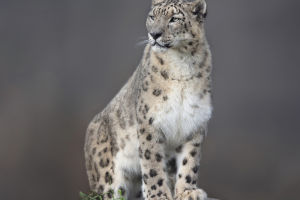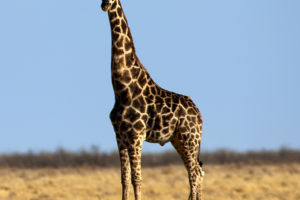Giants of the Wild
Elephants are the largest land mammals on Earth. Their massive bodies and unique behaviors have attracted attention worldwide.
There are two main species of elephants: the African elephant and the Asian elephant. These two species differ in appearance, habits, and distribution, but they also share many similarities.
1. Physical Characteristics
Elephants can reach a height of 3 to 4 meters and weigh over 5 tons. African elephants are generally larger than Asian elephants, and their ears are larger, wider, and fan-shaped, which helps with heat dissipation. In contrast, Asian elephants have smaller, more rounded ears.
The elephant's nose has evolved into a unique long trunk. The tip of the African elephant's trunk has two finger-like projections that can grasp small objects, while the Asian elephant's trunk has only one such projection.
Elephants have very thick skin, about 2.5 to 3 centimeters thick, but it is also highly sensitive and capable of detecting subtle touches and temperature changes.
Their skin is covered in numerous wrinkles, which not only make them appear larger but also help retain moisture and regulate body temperature. The elephant's incisors have evolved into long tusks. African elephants generally have longer and thicker tusks, while Asian elephants' tusks are shorter, and some female Asian elephants lack tusks altogether.
2. Social Structure and Behavior
Elephants are highly social animals and typically live in matriarchal societies.
Elephant herds are usually led by an older female, who guides a family group consisting of younger females and calves. Adult male elephants usually leave the matriarchal group upon reaching sexual maturity and live a solitary life or form small "bachelor groups" with other males.
Elephants are known for their complex social behaviors and communicate with each other through various means, including sounds, body language, and touch. They produce low-frequency infrasound that can travel several kilometers, used to convey information and locate other elephant herds.
Elephants also express a wide range of emotions, including sadness, joy, anger, and compassion. When an elephant dies, other elephants may display mourning behaviors, staying by the body for an extended period or covering it with branches.
Elephants are considered one of the most intelligent animals, possessing high learning ability and memory. They can use tools, such as branches to swat flies or dig for water. The older elephants in a herd often lead the group in finding water and food during migration. Their memory allows them to remember routes and resource locations that haven't been used for years.
3. Habitat and Conservation
Elephants inhabit tropical and subtropical regions of Africa and Asia. African elephants primarily live in sub-Saharan grasslands, forests, and swamps, while Asian elephants are found in the forests and grasslands of South and Southeast Asia.
Elephants are herbivores and require a large amount of food and water daily. An adult elephant may consume up to 150 kilograms of plants daily, including leaves, bark, fruits, and grass.
Elephants play a key role in their ecosystems and are often referred to as "ecosystem engineers." By eating leaves and bark, they control plant growth and prevent the overgrowth of certain tree species, helping to maintain ecological balance. Their dung helps disperse seeds and provides a vital habitat for insects and other small animals. Additionally, when searching for water, elephants may dig into the ground, creating small waterholes that other animals can use.
Despite having no natural predators, elephants face severe threats from human activities. Poaching for ivory, habitat loss, and human-elephant conflicts are the main challenges they face. Both African and Asian elephants are listed as endangered species, and the international community has taken several measures to protect them, including banning ivory trade, establishing protected areas, and promoting eco-tourism projects to minimize human-elephant interference.
Conclusion
As one of the most magnificent creatures on Earth, the survival and well-being of elephants are not only crucial to biodiversity but also reflect the relationship between humans and nature.
Protecting elephants is not just about preserving a species but also about maintaining the balance and health of entire ecosystems. Through global collective efforts, we hope to create a safer and more sustainable future for elephants.


